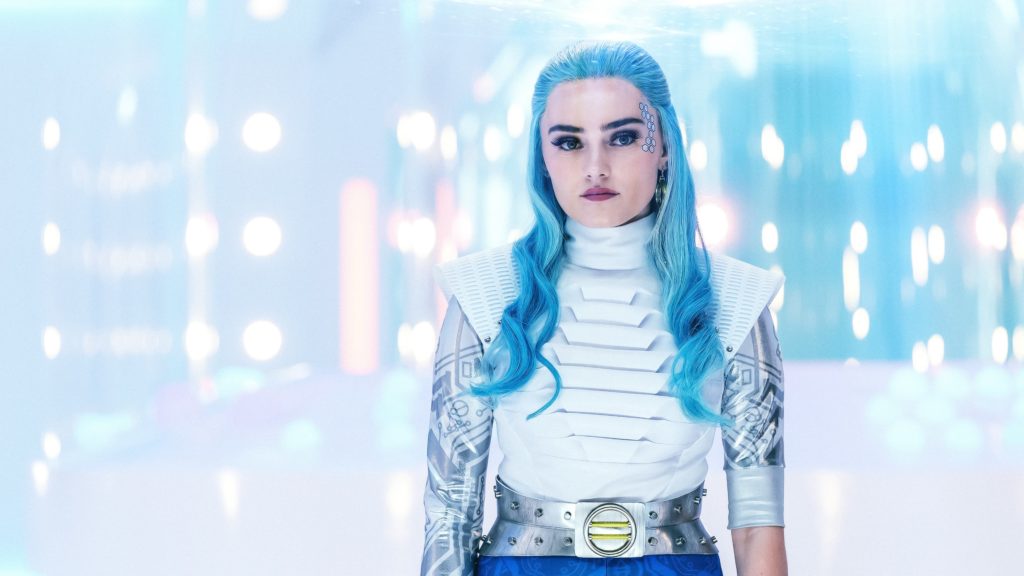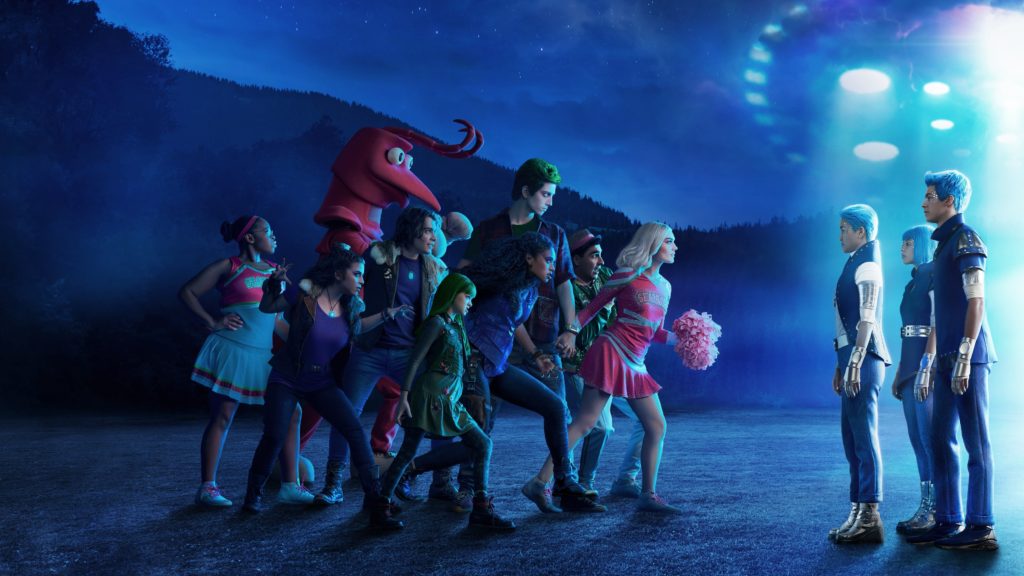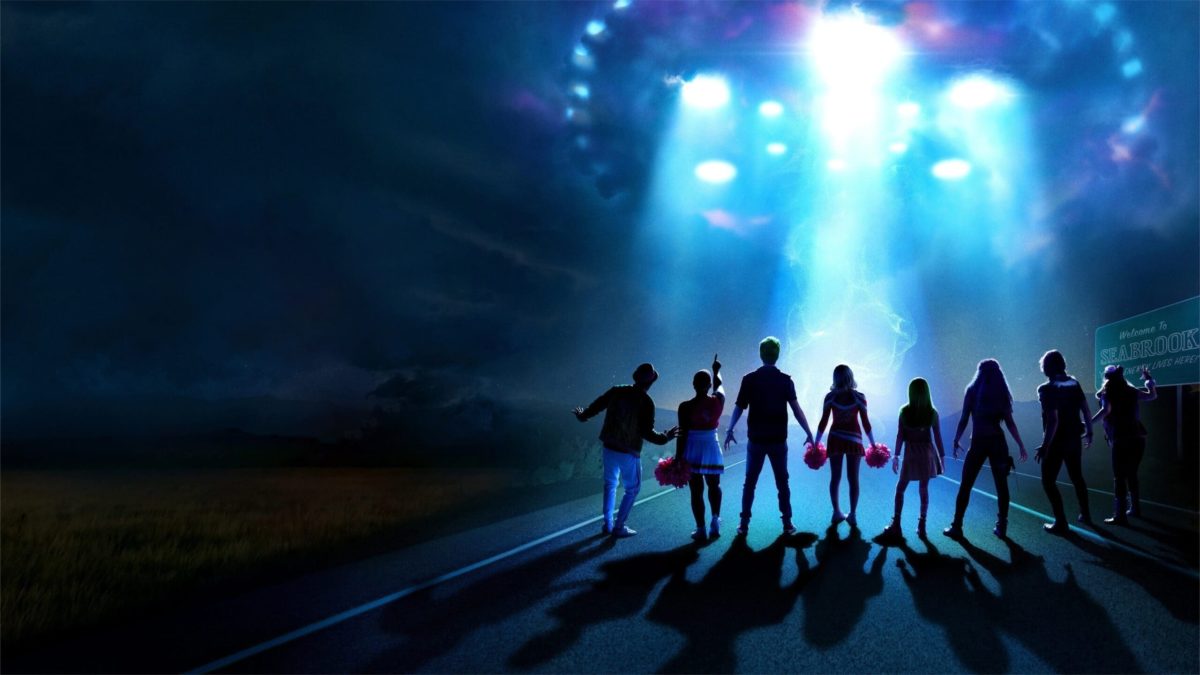If different was a superpower, we'd be so flawless
Thus ends the strangest trilogy in Disney Channel Original Movie history. Although, I suppose we can no longer call it a DCOM given that it debuted on Disney+ (DPOM?).
As you might recall, or perhaps not if you are a sane person who doesn’t obsessively watch these cheesy musicals, the Zombies movies (stylized Z-O-M-B-I-E-S) tell the story of Seabrook, a town where humans coexist with zombies who have been cured of their brain-eating impulses. Their main lingering zombie trait is that they look and dress like Jack Nicholson’s joker. The second movie in the series added indigenous werewolves to the mix.
The two main characters of the Zombies series are Addison (Meg Donnelly) a human(?) cheerleader and Zed (Milo Manheim), a zombie football player, who share an across-the-tracks romance kicked off in Zombies 1. Addison also has a strange tuft of platinum white hair that makes her feel separate from her fellow humans. Zombies 2 introduced the idea that Addison is searching for her own supernatural identity.

But the Zombies movies are really about two things: First, they are big, messy, ham-fisted anti-racism parables. This message is told in such a deeply-flawed, obtuse way that it actually circles back around to hilarious self-parody, at least in the first outing.
The second thing this movie series is about is its own obsession with its radical color scheme. You see, everything in Seabrook — and I mean everything — is pink and green. On the human side of the tracks, this conveys as pastel, almost neon, set of shades. Meanwhile, zombies have a darker palate that’s more of a rich purple and jungle green. Unfortunately, Zombies 2 screws this up by giving the werewolves an, ugly, brown & navy, Jacob-from-Twilight-but-he-shopped-at-Gap look. Now that I think about it, giving the distinction of “ugly” to the werewolves is a bit unfair, given the overall disorienting garishness of the series.
Did I mention these are musicals too? The over-processed pop tunes are inconsistent, but the choreography and production design of the numbers is consistently top-notch. As in: These are better at being musicals than plenty of Hollywood musicals I’ve seen. It’s doubly true in this third entry in which some of the numbers go thermonuclear with bizarre energy.
And the entire experience is coated with a cheerful glaze of camp. These movies know that they are silly, so even when they take their anti-racism themes too seriously, we’re getting big, goofy gags, outrageous costumes, and breathtaking tackiness.
After much prelude it is time to discuss Zombies 3. But such prelude is actually quite necessary, because this film falls in the lineage of trilogy cappers that exist not mainly as discreet stories, but centrally as a conclusion for what we’ve seen in the past two stories. More of what we love, with proper closure, too.
And so, I will warn you, readers, when you see my rating below, it assumes that you have at least a little bit investment in this series and subscription to its particular vibe, as I do. If you are coming in blind, I suggest you head for the hills, or at least dip your toes in with Part 1.

The new cryptid type this outing is aliens. They are much more interesting than the contribution to Zombies 2, werewolves, in story function and, especially, aesthetic. The aliens we meet in Zombies 3 are androgynous silver and blue hive mind super-beings, all gender-ambiguous and autistic-coded. They land on Earth in an expressionistic, 2001-esque mothership voiced by RuPaul.
The film has two main plots: first, we follow the aliens’ quest to find a map to a planet called Utopia, which is a wonderful planet of legend they can call home. And it certainly isn’t going to end up being Earth in a cheesy third-act twist, nope.
Meanwhile, our core cast of characters is on the verge of graduating high school and enrolling in Mountain University. But the MU admissions team hasn’t gotten the anti-racist memo yet. They have not learned, as Seabrook and audiences have across two previous movies, that monsters are good and should be treated equal to humans. In the series’ spirit of ungainly metaphors for racial issues, this reads as a story about affirmative action controversies.

I won’t sugarcoat it: The plot in Zombies 3 is pretty aggressively broken. The movie often contradicts itself, and there doesn’t seem to be much coherency in the powers and in-universe “rules” of the aliens.
The music is in the same approximate vein and quality as the previous outings. The choreography and production of the numbers remains terrific, especially the early “Alien Invasion.” There’s a number called “Ain’t No Doubt About It” that gets some fun, Looney Tunes-esque gags of the characters barely missing mortal danger, serving as a metaphor for the precarious relationship between Zed and Addison. “Exceptional Zed” is probably the catchiest individual number. (Zombies 3 also reprises “Someday” from Zombies 1 in the conclusion, because it is apparently a requirement of a Zombies movie to do so.)
And yet, despite the lack of script polish, I feel a lot of fondness to Zombies 3. For one, the Aliens add a really fun visual and comic dynamic (nonbinary actor Terry Hu gives a delightful performance as a detachedly analytical and curious alien). It also feels like a proper payoff on the series; the identification of Earth as a flawed “Utopia” is a nice summation of the series’ stabs at progressive optimism. Addison completing her self-discovery arc, is nice and decently well-executed. The biggest missed payoff is on Addison and Zed’s romance, which feels pretty secondary despite being the main focus of the original entry in the trilogy.
And, hey, it’s got big goofy colors and costumes and choreography, with the camp at intergalactic levels. It’s definitely not good cinema, but I was smiling.
- Review Series: 2022: Year in Film
Is It Good?
Nearly Good (4/8)
Dan is the founder and head critic of The Goods. Follow Dan on Letterboxd. Join the Discord for updates and discussion.

